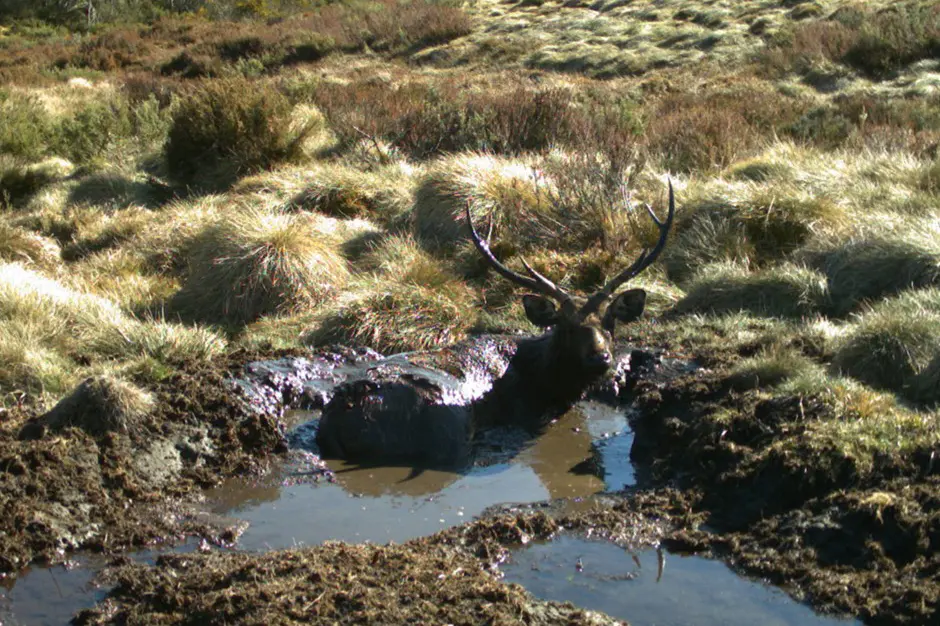PHOTO
54053.0
By Peter Jacobs, executive officer of the Victorian Deer Control Community Network, who lives in the Alpine Shire and is a member of the Upper Ovens Landcare member.
The unfolding disaster of the growing feral deer population in Victoria is not news to many residents of the Alpine Shire.
Feral deer are having a big impact on farmers, plantation managers, orchardists, road users, gardeners and the natural environment in the Alpine Shire.
Landcare rehabilitation projects along the Ovens River are frustratingly trashed and trampled by feral deer, even large trees.
Frontier Economics has estimated that the cost of deer to the Victorian community over the next 30 years will be over $2 billion if nothing is done.
A recent study by Melbourne University reports that 469 species are exposed to additional extinction risk from feral deer and the cost to conservation of the natural environment will be $935 million over the next 20 years.
Victoria now has the highest population of feral deer of all Australian states and the highest proportion occupied by feral deer.
The activities of deer hunters have not controlled deer numbers and with no natural predators, deer are now a large uncontained and uncontrolled feral population.
However, the Victorian government is paying no attention to this unfolding disaster.
Feral deer continue to be protected under Victoria’s Wildlife Act 1975 for game purposes, a relic to distant times when deer were few and a curiosity.
Feral deer are now a serious pest, and all other mainland states have now moved to declaring deer as a pest.
The review of the Wildlife Act began in 2021 and was a prime opportunity to finally acknowledge that deer are not a native animal and don’t need to be protected.
An independent expert panel was put in place to hear from the community and make recommendations to government.
It took the government four years to finally release their recommendations.
We now know that the expert panel stated clearly in their advice to government that “deer should be removed from the Wildlife Act so they can be declared a pest”.
This allows deer species to be declared Established Pest Animals under the Catchment and Land Protection Act 1994 (CaLP Act) along with goats, pigs, rabbits, foxes and cats.
What did the government do with that advice? Ignore it.
Irrespective of clear evidence that they are now a serious biosecurity and economic threat, overwhelming public opinion and advice of its own expert panel, it completely ignored this advice and announced that they won’t be removing the protected status of feral deer.
The protected status of deer is clearly a barrier to effective control.
It continues to afford confusion to the community: some see them as cute and to be protected like a native animal; some consider that because they are game and need to be harboured as a hunting resource; while to others they are a serious pest and damaging assets.
While one landowner makes an effort, the other harbours deer; pitting neighbours against each other.
Landowners dealing with declared pest animals get advice, literature, support and grant opportunities from the state government to take a landscape approach to controlling their impacts.
There is no such help for land managers grappling with feral deer impacts because they are not a declared pest, even though their threat to biosecurity is equally relevant and in the Alpine Shire may be the biggest threat.
Landowners wanting to trap and destroy deer where shooting isn’t feasible - a method widely used throughout Australia - are generally prevented from doing so under law.
While deer are protected and have game status, it is clear there is an expectation that they will remain in the landscape for the enjoyment of hunters.
Furthermore, the Victorian Minister for Environment has also announced, without any consultation or alignment with state deer control plans or park management plans, that recreational deer hunting will be extended into national parks in eastern and central Victoria and $1 million was found in a stretched state budget for building huts and cool rooms for deer hunters to “help manage deer populations to protect our environment”.
There is no evidence that deer hunting manages deer populations as we continue to see populations spread and impacts increase where hunting occurs.
These funds would be far better targeted if they were to support landowners to control feral deer.
A million dollars would go a long way toward setting up support programs and deer control facilitators in hot spots like here in the Alpine Shire.
The Victorian government is mishandling the crisis of the growing feral deer population through the rejection of the expert panels’ advice and these misguided announcements to support deer hunters as the answer, suggesting it’s a position more aligned with aspirations of deer advocacy groups rather than an objective biosecurity response.
If feral deer are declared a pest, there is no impact on deer hunting.
Hunters can hunt pests under current legislation.
They don’t need to be protected to be hunted, and hunter contribution is acknowledged but it is not the answer.
We need proper effective and coordinated deer control programs and support to the community, not relying on an ineffective and previously rejected hunter focus that appears to be being reignited by the current Minister for the Environment.





